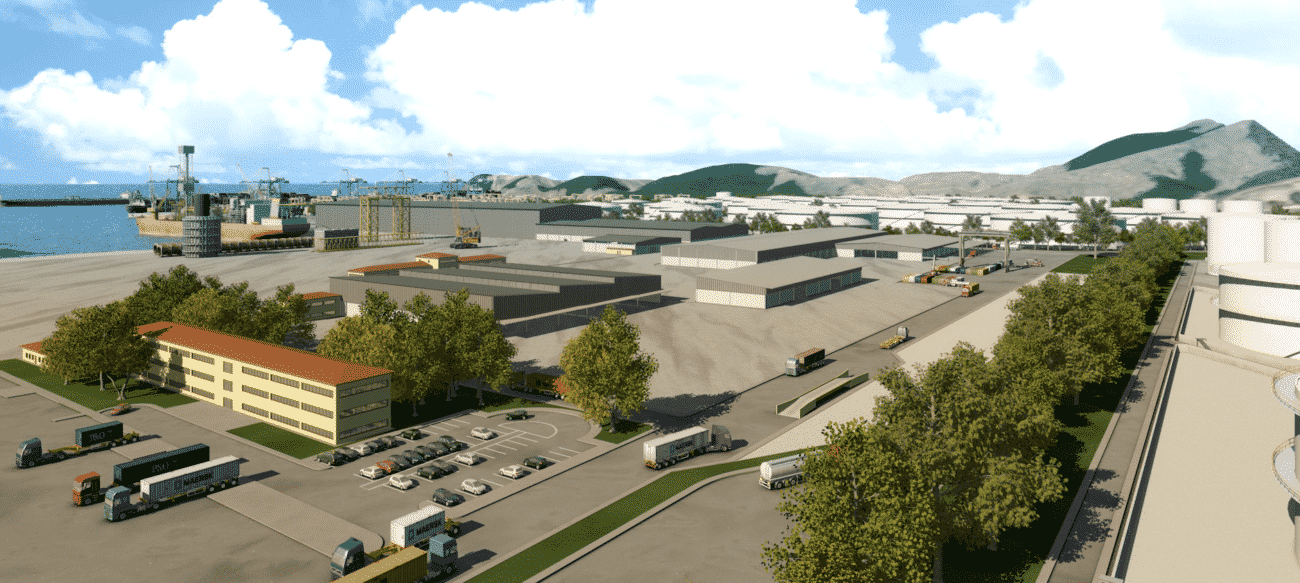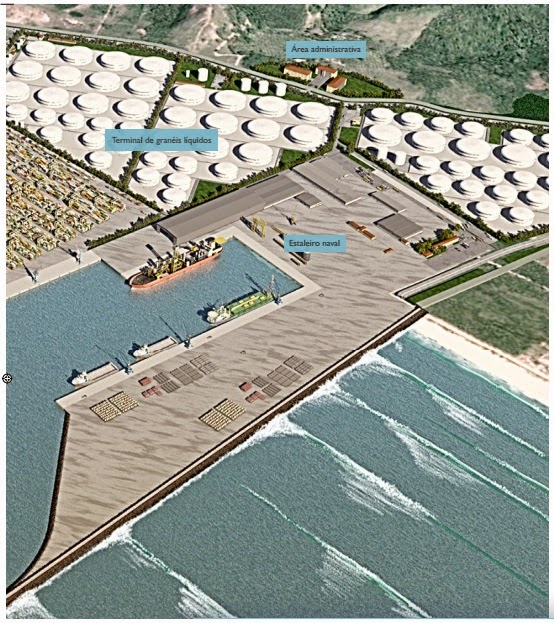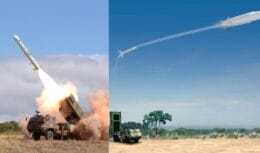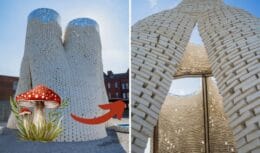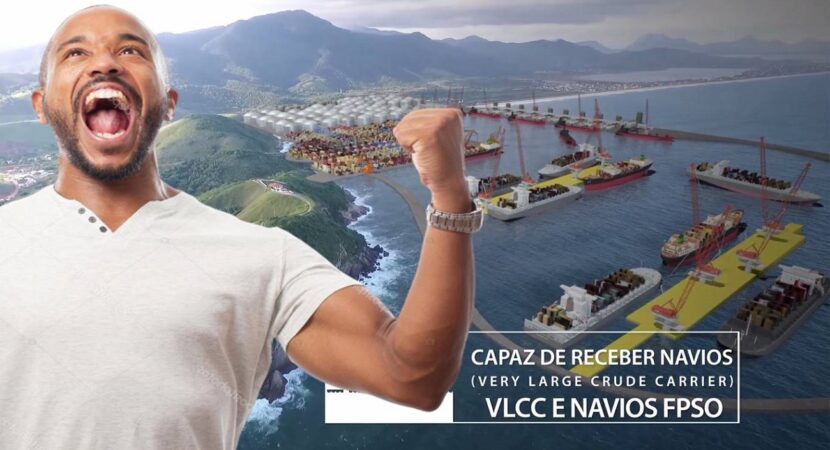
The Installation License (LI) for the construction of the Ponta Negra Port Terminal (TPN) in Maricá, Rio de Janeiro, was obtained by DTA Engenharia and will be the largest port undertaking in the country. The area, of 5,5 million square meters, was acquired by the company about 10 years ago. LI is the last phase of environmental licensing.
DTA received the Installation License (LI) for the construction of the largest 100% private port terminal, located on the corner of Jaconé beach, in Maricá, Rio de Janeiro. This will be the largest 100% private port terminal in the country and promises a new reality for the state of Rio de Janeiro, being able to leverage the movement of pre-salt oil, Polo Gaslub and large Petrobras operations. The information came through a press release on 29/12/2021 to the CPG Portal.
Read also
Also in 2011, DTA obtained support from the federal, state and municipal governments for the port terminal project. However, a legal problem during the environmental licensing process led to the project being stopped. In this way, the construction of the largest port terminal in Brazil, a private investment, was stopped for a period of almost ten years.
See the video that the Municipality of Maricá presented at the Mipim fair in Cannes, France in 2016, with the presentation of the Ponta Negra port terminal project (TPN)
Project to build the largest port terminal was paralyzed for 10 years due to environmental and historical issues
It all started after DTA Engenharia obtained the Preliminary License (LP) in 2016, which is nothing more than the environmental viability of the project. The next step would be the release of the Installation License (LI) and, shortly thereafter, the works would begin. However, due to a public civil action, which claimed that the site housed beach rocks (beachrocks), and consequently the need for its preservation, the entire construction scenario of the port terminal project in Maricá, in Rio de Janeiro, changed the long-term loss of billions in investments and the generation of thousands of direct and indirect jobs.
The construction of the port terminal was interrupted until July, when DTA Engenharia received the news about the suspension of the sentence, and then only the Installation License (LI) was needed so that DTA could proceed with the work.
Resumption of negotiations for the construction project of the port terminal may be responsible for handling pre-salt oil, Polo Gaslub in Itaboraí and large Petrobras operations.
The port terminal project in Maricá, in Rio de Janeiro, moves forward again. The area for construction of the port terminal, of 5,5 million square meters, was acquired by DTA Engenharia around 10 years ago. The Installation License (LI) is the last phase of the environmental licensing. The publication was made last Thursday, December 23, in the Official Gazette, after approval by the State Commission for Environmental Control (CECA), obtaining by a large margin of 10 favorable votes out of 12 voters.
The opinion of the State Institute of the Environment – INEA, environmental agency of the state of Rio de Janeiro, concluded that “in view of the information presented, considering the positive aspects for the development of the state of Rio de Janeiro, especially for the region where the project will be undertaken; that the entrepreneur sought in every way to meet INEA's request with socio-environmental solutions to mitigate the effects of the project on the environment; of the technical proposals presented for the purpose of mitigating the negative impacts identified, the INEA technical team suggests the granting of the LI, provided that the Term of Commitment for Environmental Compensation (TCCA) is executed and the proposed conditions for the license contained in this opinion are respected ”.
With the decision, the next step to be taken by DTA Engenharia is the resumption of negotiations and presentation rounds of updates to the construction project for the port terminal.
Mooring berth equipped with tubes designed to remove oil stored in ships

The complex could be responsible for practically all the daily movement of pre-salt and post-salt oil, serving, as well as the future Polo Gaslub from COMPERJ, in Itaboraí, 35 km in a straight line from TPN, in addition to other Petrobras operations, through the 3 million m Rota 24 gas pipeline3/ day, which passes inside the TPN, and was the first unit to be installed by Petrobras inside the terminal.
Maricá has the potential to become one of the largest industrial centers in the country
In an interview given to the Municipality of Maricá at the time of signing the cooperation agreement with the objective of implementing the Maricá Industrial Park and the Ponta Negra Terminal (TPN), on November 26, 2021, and consolidating local productive arrangements, Governor Cláudio Castro stated that “the Maricá Industrial Park and the Ponta Negra Terminal are strategic and fundamental logistics infrastructure elements for the state’s economic growth.”
Maricá signs an agreement for the implementation of an Industrial Park
Still according to the Governor, “through these facilities and others such as Galeão and Cabo Frio airports, we are going to reclassify Rio as the hub Brazilian market for export, import, cargo distribution and passenger movement.” On the same occasion, Mr. Vinicius Farah, State Secretary for Economic Development, Energy and International Relations, said that the partnership will further promote the Maricá region. For him, Maricá has the potential to become one of the main industrial centers in the country.
Port terminal in Maricá is strategically close to Polo Gaslub
This is a very ambitious project in the city of Maricá, which has a strategic position in the state of Rio de Janeiro, mainly due to its proximity to Polo Gaslub. The TPN will be installed in the Municipality of Maricá, on Jacone beach, in the state of Rio de Janeiro. Access by land, rail and sea is favorable and takes place as follows, according to the Environmental Impact Report (RIMA) of the enterprise:
- Land: Highway RJ-104, the intersection with Highway RJ-118 and reaching the limits of the land of the DTA. The advantage is the proximity to Comperj, reducing logistics costs and interference in local communities;
- By rail: proximity to the right of way for the former Estrada de Ferro Maricá/Cabo Frio branch railroad (which is no longer in operation);
- Maritime: natural depth of 30m close to the coast, which allows the operation of large ships. Allows reduced dredging volumes for the implementation of the access channel and evolution basin of the ships and the related environmental impacts.
The DTA Engenharia executive foresees investments of around US$ 2,45 billion in the enterprise, around R$ 12,8 billion. The plan is to build four structures, one for liquid bulk terminals, another for natural gas, a third for containers, and a shipyard for repairs, constituting an operational area that adds up to 3,5 million m².
The initial phase, with the construction of the breakwater, the retro area, the dredging, among other preparation works, will be carried out by DTA itself, which specializes in engineering for the port sector.
Throughout the structuring of the project, a differential stood out: the proximity to Polo Gaslub, installed in the area that houses Comperj, in Itaboraí. The Petrobras installation foresees lubricant operations, natural gas processing and, possibly, a thermoelectric plant.
The TPN will allow COMPERJ to have access to its 440 thousand barrels of oil per day in a very economical way, given the proximity of the future terminal. Currently, Brazil does not have any undertaking capable of meeting this demand for oil in STS – Ship-to-Ship operations. The area, with 1.800 meters facing the sea, has a differential: 30 meters of natural depth, just 500 meters from the coast inland. No project in the Atlantic Ocean has this fantastic natural attribute, enabling the design of an onshore port with breakwaters using the very high quality gneiss rock existing within the glebe, and without requiring future maintenance dredging, just the implantation one, guaranteeing the lowest operating costs in the country.
Port terminal in Maricá, Rio de Janeiro, will be the largest and most modern oil transhipment terminal in Brazil
Another positive point is that the Route 3 gas pipeline, which connects the Pre-Salt hub of the Santos Basin to Gaslub and will pass through the area of the future TPN, which opens up the possibility of access to the port terminal.
The new port will have a large tank for oil and derivatives, allowing the classification of oil according to its API degree, the Route 3 gas pipeline, which will be connected to the Refinery of the Petrochemical Complex of Rio de Janeiro (Comperj), sending 24 million cubic meters per day, and an area for general cargo. The development is 35 kilometers from COMPERJ in a straight line, where the shore approach, everything Petrobras wanted. DTA carried out a meticulous study of the area, looking for the right place to invest and meet today's completely repressed demand.
Concept Images of the TPN's Inner Courtyards and Project Structure – Ponta Negra Terminals (TPN)
IMAGE: Panoramic view of the design of the TPN's internal courtyards. SOURCE: RIMA TPN PONTA NEGRA TERMINALS. IMAGE: Panoramic view of the implantation project. SOURCE: RIMA TPN PONTA NEGRA TERMINALS.
The president of DTA Engenharia, Mr João Acácio Gomes de Oliveira Neto, points out that “this news comes at a time when Brazil already produces 2 million and 700 thousand barrels per day, 60% of which pre-salt. Of this total, 1 million and 600 thousand are produced in front of Maricá. In addition, currently, the ship to ship of this type of operation is carried out on the high seas or in the Bay of Montevideo. The new installation will be ready for this purpose”.
Port terminal will receive giant ships
The TPN will be the largest liquid bulk terminal in the southern hemisphere, in addition to being an important source of tax revenue for the State of Rio de Janeiro. According to PGE-RJ, the Ponta Negra Terminal (TPN), the potential for annual tax generation is R$ 230 million (ISS, ICMS, Cofins, IR).
Cargo that cannot be routed through the Guanabara Bay and Angra dos Reis terminals will be absorbed by TPN, enabling lower operating costs and greater logistical security for the oil refineries in Rio de Janeiro and Minas Gerais. In addition, it will house the largest container terminal in Latin America, capable of receiving large-capacity ships, which will lead to a reduction in freight rates in the market.
In 2024, the first ship should dock if everything goes as planned!

